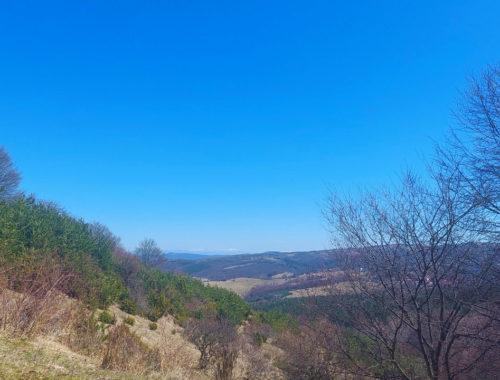
Discover Bulgaria’s Busludzha Monument: A Must-See Cultural Landmark
The Buzludzha Monument is one of Bulgaria’s most unique and controversial landmarks. Built in the 1970s as a tribute to the country’s communist party, the monument is now abandoned and in a state of disrepair. Despite its decay, the Buzludzha Monument continues to attract visitors from around the world, drawn by its eerie beauty and the history it represents.
Located on top of the Buzludzha peak in the Central Balkan Mountains, the monument is a striking example of communist-era architecture. Designed by the Bulgarian architect Georgi Stoilov, the building is a massive concrete and steel structure in the shape of a flying saucer. It features a large circular hall with a diameter of 60 meters, as well as a tower and a giant red star on its roof.
The interior of the monument is equally impressive, with mosaic murals depicting scenes from Bulgarian history and socialist ideology. The most prominent feature of the hall is a huge bronze statue of Lenin, which once rotated on its pedestal. Today, the statue lies broken and shattered, a testament to the fall of communism and the changing political landscape of Bulgaria.
Despite its striking appearance, the Buzludzha Monument has been abandoned for decades, and the elements have taken their toll on the building. The roof is leaky, and the interior is covered in graffiti and debris. Nevertheless, visitors continue to come to the monument, drawn by its eerie beauty and the opportunity to explore a piece of Bulgarian history.
If you’re planning a visit to the Buzludzha Monument, there are several ways to reach the site. The easiest is by car, as the monument is located near the Shipka Pass, a major road connecting the cities of Gabrovo and Kazanlak. Visitors can also take a bus from Sofia or other major cities to the nearby town of Kazanlak, and then take a taxi to the monument.
While the Buzludzha Monument is a fascinating piece of Bulgarian history, it is important to remember that it represents a dark chapter in the country’s past. For many Bulgarians, the monument is a symbol of the oppressive communist regime that ruled the country for more than four decades. Nevertheless, the monument continues to attract visitors from around the world, drawn by its unique architecture and its place in Bulgarian history.
In recent years, the Busludzha monument has undergone extensive renovation work. The Bulgarian government and various NGOs allocated funds for the repair of the building, and a team of experts has been working to restore it to its former glory. The renovations have included reinforcing the building’s structure and repairing the roof, as well as restoring the mosaics and other decorative elements.
The renovated monument has become a popular destination for tourists and locals alike. Visitors can now safely explore the interior of the building and take in the stunning views from the top. In addition to the historical significance of the site, the renovated Busludzha monument is now also a symbol of Bulgaria’s commitment to preserving its cultural heritage.
Despite the extensive renovations, there is still ongoing debate about the future of the monument. Some argue that it should be transformed into a museum or cultural center, while others believe that it should be left as a symbol of Bulgaria’s communist past. Regardless of its future use, the Busludzha monument remains a fascinating and unique piece of Bulgarian history, and a testament to the country’s complex past.
In conclusion, the Buzludzha Monument is a unique and controversial landmark that offers a fascinating glimpse into Bulgaria’s communist past. While the monument is now abandoned and in a state of disrepair, it remains a popular destination for tourists and history buffs alike. And if you have the time, don’t miss out on a visit to the nearby Shipka Monument, which offers a stark contrast to the Buzludzha’s communist architecture and a tribute to Bulgaria’s military history.
You May Also Like

Veliko Tarnovo: Bulgaria’s Charming Medieval Capital
March 3, 2023
Exploring the Enchantment of Vitosha Mountains: A Nature Lover’s Paradise Near Sofia
August 22, 2023

